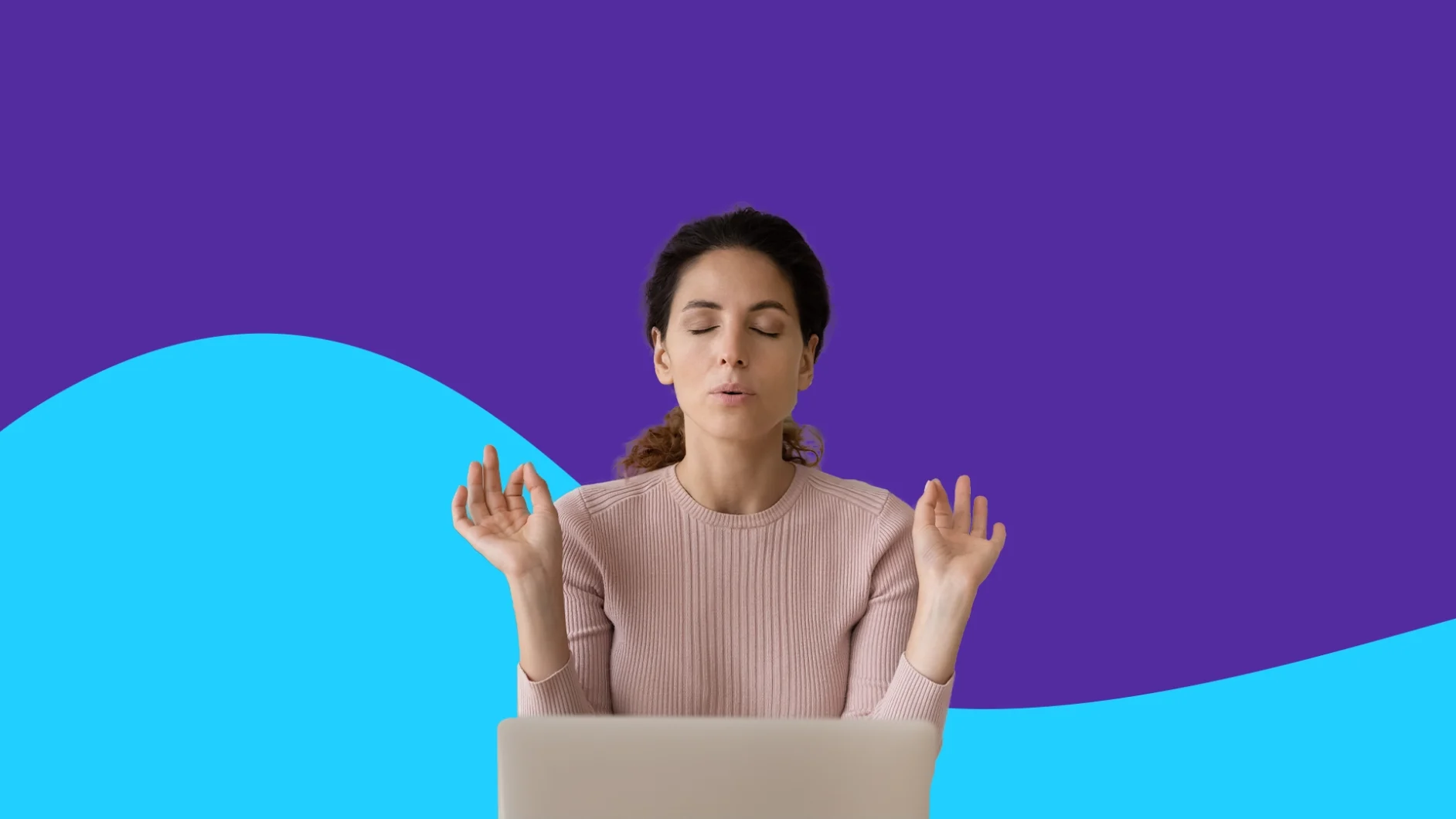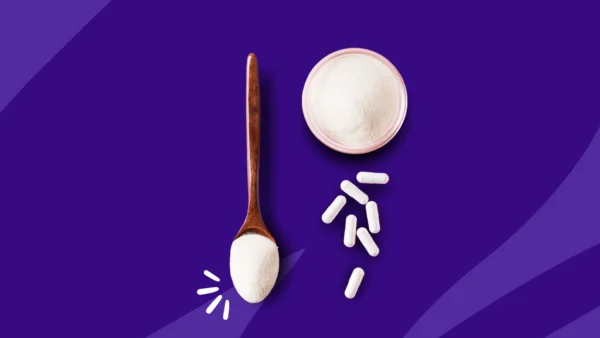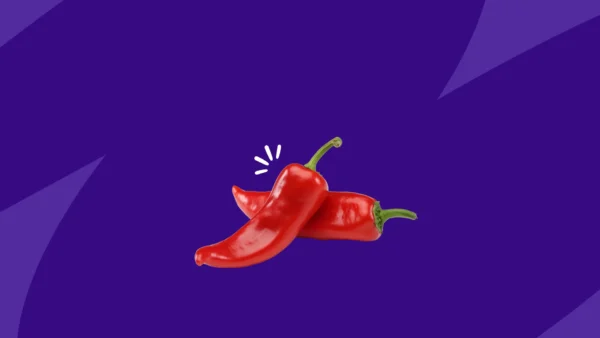Dealing with anxiety can often feel lonely, but the reality is that anxiety is a very common mental health condition. According to the National Institutes of Health (NIH), about 19% of American adults experienced an anxiety disorder in the past year.
There are varying types and severities of anxiety disorders, many of which are characterized by repeated instances of intense fear or panic. Some people with anxiety need medical treatment to help manage the condition, while others are able to cope with anxiety through lifestyle changes and mindfulness practices. Many people who experience anxiety rely on a combination of the two; even if you’re seeing a mental healthcare provider and taking medication, those additional coping techniques can make a significant difference in your day-to-day life. Breathing exercises for anxiety, in particular, can serve as a great tool when you’re feeling particularly anxious or triggered. Ahead, learn about how anxiety affects your breath and how these 10 breathing exercises could help.
How does anxiety affect breathing?
Anyone who has had a panic attack knows anxiety can mess with your breathing. But did you know the connection between your body and mind is a two-way street?
“When we are anxious, our bodies feel activated, and our breathing quickens and shallows,” explains Elizabeth Wassenaar, MD, a regional medical director at Pathlight Mood & Anxiety Center. “Conversely, if we can’t catch our breath, it can make us feel more anxious.” Ultimately, it comes down to your parasympathetic nervous system’s fight-or-flight response.
“When you’re anxious, your body perceives a threat and prepares for action … increasing your breathing rate to supply more oxygen to the muscles,” says Deepti Agarwal, MD, director of interventional and integrative pain management at Case Integrative Health in Chicago.
Your body’s fight-or-flight response is a valuable survival tool, but anxiety can mess with threat perception. With anxiety, your stress response can set in for no reason; your blood pressure spikes, and your breathing rate increases. But remember: The mind-body connection is a two-way street, so relaxation techniques like deep breathing exercises for anxiety can help interrupt an errant stress response.
“Actively using techniques to slow breathing can send the reverse signals to the brain that we are not in fight or flight, and thus we do not need to be mentally scared or anxious,” says Timothy Jeider, MD, a double board-certified psychiatrist at Nevada Mental Health.
10 breathing exercises for anxiety
Whether you’re experiencing a panic attack or feeling other symptoms of anxiety, it is possible to intervene on your own behalf. “While regaining control of your breathing during an anxiety attack can be tricky, it is crucial for managing the symptoms and calming your body and mind,” Agarwal says.
Here are 10 breathing exercises for anxiety you can try.
1. Simple structured breathing
Research shows that simply paying attention to your breathing and working on breath control can improve feelings of anxiety and help reduce an elevated heart rate. “The simplest breathing technique to combat anxiety is to breathe in through your nose and exhale through your mouth,” Dr. Jeider says. “Do this slowly and deliberately.”
- Inhale slowly through your nose.
- Exhale slowly through your mouth.
- Repeat.
2. Belly breathing
Also known as diaphragmatic breathing, belly breathing helps you pull air deep into your ribcage. Anxiety sometimes leads to quick, shallow breathing. This technique uses your diaphragm, the large muscle below your heart and above your stomach, to help you breathe more easily and release tension.
Follow these steps to give diaphragmatic breathing a try:
- Lie flat on your back with your knees bent.
- Place one hand on your chest and the other on your belly. (“It helps to place a hand on your belly so you can feel your hand rise and fall with your breaths,” Dr. Wassenaar explains.)
- Inhale deeply through your nose. Imagine pulling the air down into your lower belly.
- Clench your abdominal muscles, then exhale fully through pursed lips.
- As you repeat the exercise, be mindful of how the hand on your belly rises and falls with each breath.
- Repeat until your stress levels decrease.
3. Box breathing
“A slightly more complex yet easy-to-learn technique is box breathing,” Dr. Jeider says. Box breathing requires you to inhale, hold, and exhale for equal amounts of time; the act of counting to yourself as you breathe will help your mind stay focused on the exercise rather than your stressors.
Here are Dr. Jeider’s instructions:
- Inhale slowly and deeply for a count of four.
- Hold your breath for four counts.
- Exhale slowly for four counts.
- Maintain the exhale for four counts.
- Repeat this breathing pattern for a few minutes until you feel calmer, Dr. Agarwal says.
4. 4-7-8 breathing
This breathing exercise helps anchor you to the present and calm your mind, which can improve your overall sense of well-being.
Here are Dr. Agarwal’s step-by-step instructions for 4-7-8 breathing:
- Find a comfortable position, either sitting or lying down.
- Close your eyes and inhale deeply through your nose for a count of four seconds.
- Hold your breath for seven seconds.
- Exhale slowly and completely through your mouth for eight seconds.
- Repeat this cycle three to four times or until you feel calmer.
5. Pursed lip breathing
Pursed lip breathing is exactly what it sounds like breathing with your lips puckered as though you are going to blow on a hot bowl of soup. It’s a simple but effective technique for managing and improving shortness of breath related to anxiety.
Here’s how to do it:
- Relax your neck and shoulders.
- Close your mouth and inhale through your nose for two counts.
- Pucker your mouth as though blowing on hot food.
- Exhale steadily through puckered lips for the count of four.
- Repeat as often as desired in everyday life.
6. Coherent breathing
Coherent breathing, or resonance breathing, is one of the best breathing exercises for anxiety because it helps relax both your mind and body. Essentially, coherent breathing is intentionally slow breathing. Research shows that training yourself to breathe more slowly can improve heart rate variability, which is a measure of stress.
In one small study of 15 people with depression, a 12-week daily coherent breathing program significantly improved symptoms of major depressive disorder.
If you want to try coherent breathing for anxiety, here are the steps:
- Sit or lie in a comfortable position.
- Inhale for four seconds, then out for four seconds.
- Repeat for one minute.
- Slow your breaths by extending each inhale and exhale to five seconds.
- Repeat for one minute.
- Slow your breathing even more, extending each inhale and exhale to six seconds.
- Maintain this pace for up to 10 minutes.
7. Mindful breathing
Anxiety causes mental, emotional, and physical symptoms. Mindful breathing is similar to mindfulness meditation—it goes beyond a physical practice to slow your mind and bring focus to your emotions.
The Mindful Breathing Lab at Mayo Clinic from Roberto P. Benzo, MD, offers helpful tips and videos on mindfulness. Dr. Benzo’s 10-breath breathing awareness exercise can help quiet your mind and body, reducing anxiety symptoms in the process.
Here’s how to do it:
- Sit up straight in a chair.
- Put your hands on your abdomen to feel the movement of your breath.
- Take three deep breaths, in through your nose and out through your mouth. Silently identify your emotions (e.g. fear or anger) as you breathe.
- Take seven more breaths. Silently identify areas of tension and relaxation in your body as you breathe.
- Repeat as often as desired.
8. Lion’s breath breathing
Most breathing exercises for anxiety are designed to slow your breathing and heart rate. But this pranayama, or yogic breathing, technique also invokes feelings of power and confidence. Plus, according to the Cleveland Clinic, lion’s breath breathing relieves muscle tension and anxiety by increasing the flow of oxygen and activating your facial muscles.
Here are the steps:
- Sit on your knees or cross-legged with your back straight and your hands resting on your thighs.
- Inhale deeply through your nose.
- As you exhale through your mouth, open your mouth wide, stick out your tongue, and make an extended “ha” sound. This is the “lion’s breath.”
- Close your mouth, relax your face, and inhale again.
- Repeat these relaxed inhales and forceful, open-mouthed exhales five to 10 times. If necessary, take breaks in between rounds with normal breaths.
9. Alternate nostril breathing
Taking a full, deep breath can be difficult if you’re on the verge of an anxiety attack. However, research shows alternate nostril breathing, another form of yogic breathwork, can help breathing efficiency.
In one study, 50 participants were instructed to do alternate nostril breathing (ANB) for 10 minutes daily while the other 50 were given no instructions. At the end of four weeks, the ANB group had significantly better peak expiratory flow rates, which is a measure of healthy airflow.
In yoga, ANB is known as Nadī Shodhana, or channel-cleaning breath. Here is how to do this type of breathing exercise for anxiety:
- Make a “whoosh” sound as you forcefully exhale through your mouth.
- Place the thumb and index finger of one hand over your nostrils, as if you are going to pinch your nose.
- Block your right nostril while inhaling through your left nostril.
- Pinch both nostrils closed while holding your breath for a beat or two.
- Unblock your right nostril and exhale through it.
- Hold your breath for a beat or two.
- Inhale through your right nostril.
- Pinch both nostrils closed while holding your breath for a beat or two.
- Unblock your left nostril and block your right nostril, then exhale.
- Repeat the process—in through your left and out through your right, then in through your right and out through your left—for up to five minutes.
10. Kapalbhati breathing
Kapalbhati, also known as skull shining breath, is another yogic breathing technique. Unlike most pranayama practices, kapalbhati focuses on exhaling rather than inhaling. This energetic breathing exercise can help increase concentration and boost your mood.
Here is how to complete a cycle of skull shining breath:
- Sit or stand up straight with your palms on your thighs.
- Inhale deeply through your nose.
- Exhale forcefully by rapidly tightening your abdominal muscles.
- Inhale naturally.
- Exhale forcefully as you tighten your core.
- Repeat for no more than five minutes.
When to see your healthcare provider
If you are feeling overwhelmed by anxiety, have new or unusual symptoms, or struggling to cope with daily life, talk to a healthcare provider. “When breathing techniques and other non-medical interventions aren’t sufficient for managing anxiety symptoms, your healthcare provider may recommend the help of a psychiatrist to prescribe medications to help alleviate symptoms,” Dr. Agarwal says.
There are medicines commonly prescribed for anxiety when deep breathing techniques and other lifestyle changes aren’t sufficient. Common classes of drugs prescribed for anxiety include:
- Selective serotonin reuptake inhibitors (SSRIs)
- Serotonin-norepinephrine reuptake inhibitors (SNRIs)
- Tricyclic antidepressants
- Benzodiazepines
During your appointment, be honest about your symptom frequency and severity so that your healthcare provider can help recommend the best options. “Sometimes, people can take medication just when they have anxiety, and sometimes they can take medication every day to decrease their symptoms of anxiety overall,” Dr. Wassenaar says.
Even if a healthcare professional prescribes medication to treat your anxiety, it often takes eight weeks for the drugs to take full effect. However, most patients find that anti-anxiety medications help decrease anxiety symptoms by half within 10 days. Simple breathing techniques can help in the meantime—and can remain a helpful practice even once your medication is fully effective.
Sources
- How To Do the 4-7-8 Breathing Exercise. The Cleveland Clinic (2022)
- Pursed-lip Breathing. StatPearls (2023)
- Pursed Lip Breathing: How To Do it Correctly. Lung Institute
- Learning Diaphragmatic Breathing. Harvard Health Publishing (2016)
- Diaphragmatic Breathing. Cleveland Clinic (2022)
- Brief structured respiration practices enhance mood and reduce physiological arousal. Cell Reports Medicine (2023)
- Effect of Resonance Breathing on Heart Rate Variability and Cognitive Functions in Young Adults: A Randomised Controlled Study. Cureus (2022)
- Treatment of Major Depressive Disorder with Iyengar Yoga and Coherent Breathing: A Randomized Controlled Dosing Study. Journal of Alternative and Complementary Medicine (2017)
- Breathe. Exhale. Repeat: The Benefits of Controlled Breathing. The New York Times (2016)
- Mindful Breathing. Mayo Clinic
- King of the Jungle: How To Practice Lion’s Breath (and Why It’s Good for You). Cleveland Clinic (2023)
- Anxiety Disorders. Mayo Clinic (2018)
- Any Anxiety Disorder. National Institute of Mental Health
- Effects of alternate nostril breathing exercise on respiratory functions in healthy young adults leading stressful lifestyles. Journal of Population Therapeutics and Clinical Pharmacology (2020).
- How and Why To Try Alternate Nostril Breathing. Cleveland Clinic (2022)
- Study of immediate neurological and autonomic changes during kapalbhati pranayama in yoga practitioners. Journal of Family Medicine and Primary Care (2022)
- Learn Kapalabhati (Skull Shining Breath). Yoga International
- Pranayama For Depression: Yoga Breathing for Anxiety & Depression. Men’s Yoga Journal











